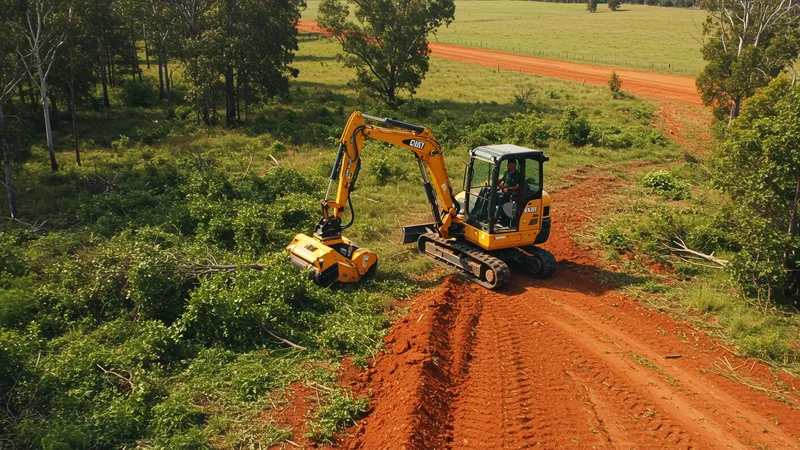
Compact Mulching Solutions With Mini Excavator Attachments
In the world of land management, efficiency and adaptability are more important than ever. Compact mulching solutions using specialized attachments designed for mini excavators are playing an increasingly vital role, particularly on Australia’s varied landscapes. These systems allow operators to transform smaller-scale machinery into powerful vegetation and debris processors, tackling tasks once reserved for much larger, less nimble equipment.
What sets these solutions apart is their seamless integration: compact mulcher attachments slot directly onto existing mini excavators. They create a flexible setup for clearing bushland, managing regrowth, and maintaining firebreaks – all tasks crucial across urban, agricultural, and remote outback environments. With demands for responsible land care and efficient project delivery on the rise, this equipment is making a distinct impact in Australia’s market.

- Fecon CEM36 Excavator Mulcher – Designed for 5–10 tonne mini excavators, ideal for Australian vegetation management. Estimated price: AUD $32,000–$37,000.
- FAE BL1/EX Mulcher – Suits 4–7.5 tonne machines, recognised for robust construction and versatility. Estimated price: AUD $29,000–$35,000.
- Mower King EM60 Mini Excavator Mulcher – Compact option with a 1.5m cutting width, sought after by landscape contractors across Australia. Estimated price: AUD $19,000–$22,000.
Compact mulchers for mini excavators offer substantial benefits for Australian landowners and contractors alike. Compared to large dedicated mulching machines, these attachments eliminate the need for major fleet investments while still delivering reliable performance. The quick-mount design ensures that a single mini excavator can be refitted within minutes, switching from digging to mulching and back again without delays or idle time.
One noteworthy advantage is adaptability: Australian terrain ranges from open farmland to dense scrub and rocky slopes. The featured attachments, such as the Fecon CEM36 and FAE BL1/EX, are engineered for these challenges. Operators gain access to remote sites, creek lines, and steep embankments, maximizing land use while minimizing the impact on delicate environments.
Regulations around fire safety and vegetation management are strict in Australia, particularly in regions prone to bushfires. Mulcher attachments help meet local council and state compliance for fuel reduction, native regeneration, and ecological conservation work. For contractors bidding on government or infrastructure projects, the capability to efficiently mulch and process organic material makes these tools highly practical.
Cost-efficiency is another crucial insight. By repurposing existing mini excavators rather than expanding heavy equipment fleets, Australian businesses can keep capital expenditure in check. This model not only reduces maintenance and transport costs but also makes advanced land care strategies accessible to smaller operators and regional councils striving to stay competitive.
For those seeking broader context and performance comparisons, the coming pages delve deeper into attachment features, application tips, and real-world Australian case studies. The deeper details reveal even more valuable insights ahead…